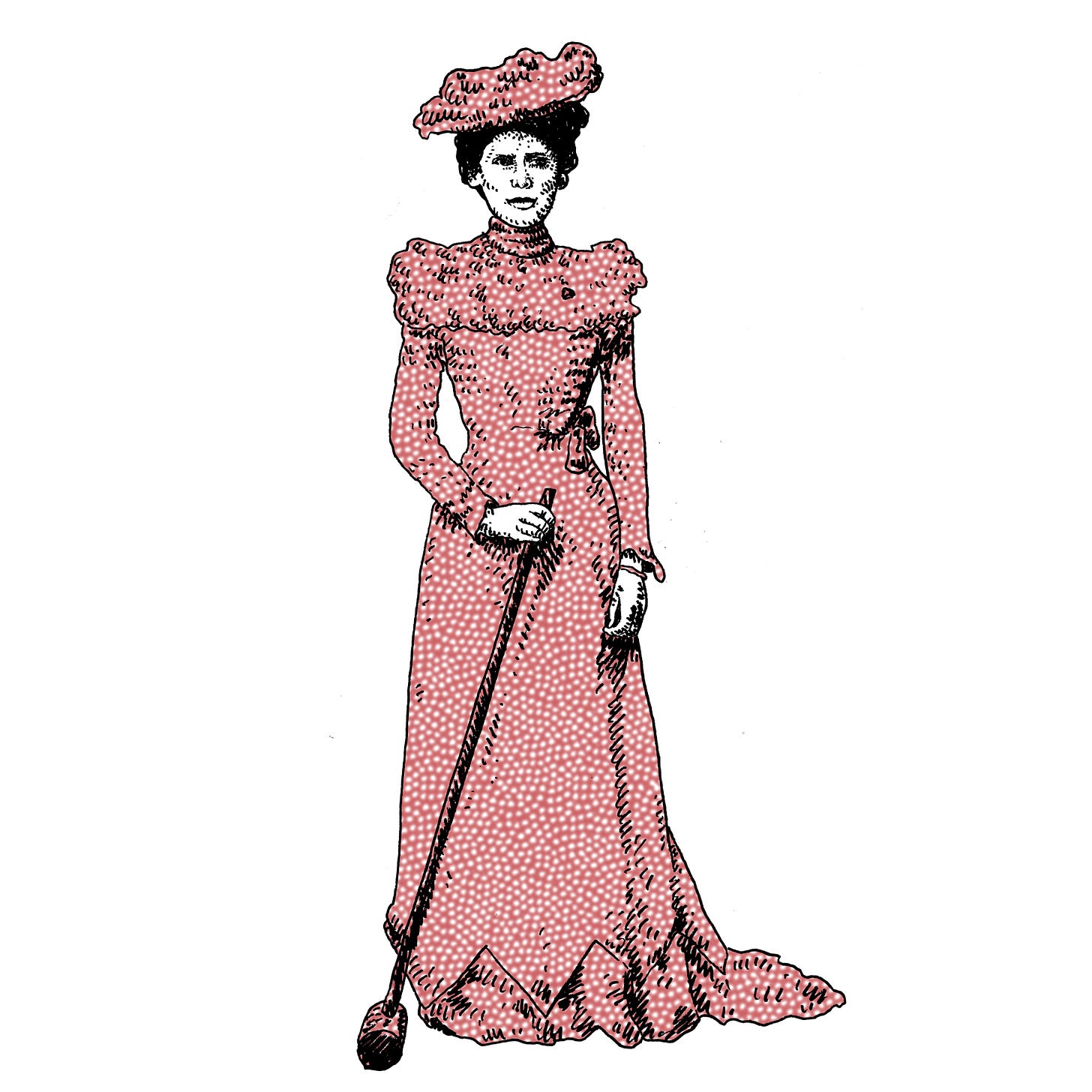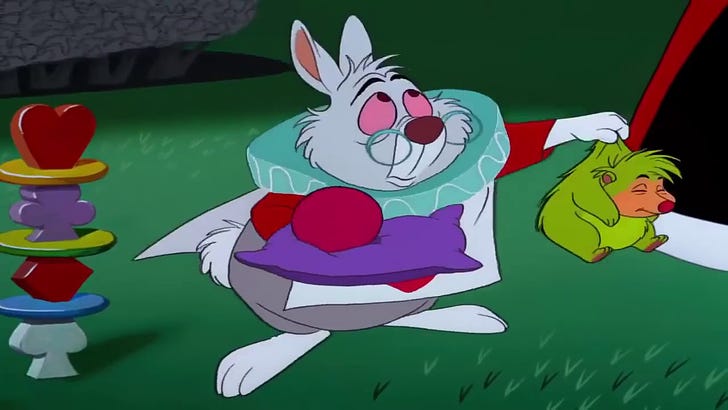Lily Gower: Croquet Madame
At the turn of the twentieth century, croquet was booming -- and the world's greatest champion was a woman.
This, the first issue of Sports Stories in the new decade, is about sports at the turn of the last century. In particular, it’s about a sport that was immensely popular, viciously competitive -- and most remarkably -- an oasis of gender equality in a deeply unequal society: croquet.
Before women in Britain or the United States earned the right to vote, a woman became the world’s undisputed croquet champion. Her name was Lilias Mary Gower. She was born and raised in an actual castle in the Welsh countryside. She was a daughter of privilege, so it only made sense that she would play croquet, the sport of choice in high society. (At least until tennis came along.)

The croquet craze started in earnest around the mid 1800s, as the sport evolved from an Irish game called “crooky.” (I imagine that a bunch of fancy Englishmen smoking pipes decided that croquet just *sounded* more serious than crooky so they changed it.) But people have been hitting balls with sticks for centuries -- there are a lot of theories as to the specific evolution of the sport, none that is clearly the right one.
What matters though, is that in this particular moment, croquet found a world that was ready for it. There was an appetite for leisure activities, and an appetite for funny sticks. For instance: in 1868 six fancy Englishman got together and decided to form a croquet club. They called it the All England Croquet Club, and located it in a town called Wimbledon. A decade later, as another sport with funny sticks became popular they changed the name to the All England Croquet and Lawn Tennis Club.
Croquet was immensely popular among proper seeming types, but it was not exactly a bastion of sportsmanship. Croquet players were notorious cheaters, and games often devolved into screaming matches and prolonged bouts of he said/she said. The issue of cheating in croquet was so commonplace that it became a sort of running trope in literature. In 1867, a young writer named Lewis Carroll spoofed it in his book Alice’s Adventures in Wonderland. In the book (which is very realistic), young Alice gets challenged to a game of croquet by the Queen. The Queen cheats.
A year later, an American writer named Louisa May Alcott included a scene of croquet cheating in her novel Little Women. (In it, a British dude named Fred, who thinks he’s smooth, nudges a ball through a wicket with his foot but gets caught by our protagonist Jo march.)
Carroll and Alcott were both prescient writers, and unfortunately their work foreshadowed the fate of young Lily Gower, whose glorious career would also be fraught with scandal. Gower was born in 1877, the year that the Wimbledon club added tennis to its name. Over the course of her childhood, croquet became increasingly popular on both sides of the Atlantic. (President Rutherford B. Hayes even got in trouble for spending $6 of government money on some nice croquet balls for the White House.)
With the growth of croquet clubs like the one at Wimbledon, the sport also became a more formalized entity. Rule books, manuals, and guides to croquet were widely published. Tournaments were organized. There was no NBA or English Premier League for croquet stars, but certain events gained prestige, and the competition was fierce. The competition was also fully inclusive, gender-wise. As the historian John Sterngass has put it:
Female grace and good manners may have been the ideal for the rule-and-taste-makers, but on the croquet ground a peculiar sort of gender reversal enabled women to temporarily jettison their passive role and often dominate, if not humiliate men.
This led to (male) croquet players and fans getting mad and accusing women of cheating. As Sterngass points out, this phenomenon was widespread enough that Lewis Carroll thought it worthy of literary attention. He returned to croquet in his final novel, Sylvie and Bruno Concluded: “Look at the way Croquet is demoralising Society,” a young doctor named Arthur bemoans. “Ladies are beginning to cheat at it, terribly: and, if they’re found out, they only laugh, and call it fun.”

In the 1890s, Gower began her ascent in organized croquet: she dominated, she humiliated, she took a mallet to the competition. Tall and slender and playing with a long mallet, Gower won at Maidstone, at Wimbledon, and at all points in between. She came to be considered the greatest player, male or female, in England.
Here’s some writing from Womanhood magazine in 1902:
Miss Gower repeated her triumph over the men of a year ago, and in doing so not only displayed much of the skill that has made her name famous wherever the pastime is played, but positively appeared to upset the form of her opponents, notably Mr. H. Black, whose tenacity . . . seemed to desert him, and Mr. Woolston, who, despite his high abilities . . . is apparently quite incapable of playing his best against the championess.
This was about the time that the scandal hit. The aforementioned Woolston accused Gower of cheating during the 1901 British open -- more specifically, he said she was guilty of “spooning.” In croquet parlance at the time, that meant using the mallet to push, instead of strike a ball.
Nothing came of the accusation. (There’s not much documented about it.) But according to Sterngass, Woolston ended up facing backlash for making the accusation in the first place, for by doing so, he was acting ungentlemanly, which was an even greater scandal than cheating.
Lily Gower would continue to dominate the sport in the years to come. And in 1906, she finally found a male competitor whose tenacity did not desert him in front of the championess. His name was Reginald CJ Beaton. They were married that year, and continued to compete against one another in the decades to come as husband and wife.

Related Reading
Unsurprisingly, there aren’t that many books *about* croquet, especially books that remain in print. However, there are a lot of books that feature croquet, especially from the Victorian era. Definitely do read Lewis Carroll and Louisa May Alcott. (Thank you to my Twitter followers for sharing the disappointing news that the new Little Women movie does not heavily feature croquet.)
In terms of shorter stuff, I highly recommend the essay “Cheating, Gender Roles, and the Nineteenth-Century Croquet Craze” by Jon Sterngaass. I quoted from Sterngass a tiny bit above, but honestly the whole read is an adventure -- way weirder and wilder than anything you’d expect from an article about croquet in The Journal of Sport History.
It’s available for free on JSTOR if you are willing to create an account.
Another good one from the Journal of Sports History is this one by Catriona M. Paratt. Helpfully it’s available in PDF form here:
“Athletic “Womanhood”: Exploring Sources for Female Sport in Victorian and Edwardian England”
Otherwise, I enjoyed sifting through contemporaneous magazines about croquet.
Wimbledon
Just a quick aside on Wimbledon: there was a lot of stress about changing the name to add lawn tennis in the first place in 1877. But then five years later, in 1882, tennis was so big that the club dropped croquet to just become the All England Tennis Club. Only people didn’t feel right about it, so in 1899 they reinserted croquet into the name (but this time after tennis). Here’s a quick timeline of the identity crisis:
1868: All England Croquet Club
1877: All England Croquet and Lawn Tennis Club
1882: All England Tennis Club
1899: All England Lawn Tennis and Croquet Club
An Endorsement
Normally I’d add something insightful here about the history of croquet in the years since Lily Gower wielded her mallet. Obviously the sport has lost some cache, and become increasingly niche. But here’s what I’m going to do instead: encourage you to go out and play croquet. You can almost certainly find a used set super cheap.
Or if not croquet, go play another low key, off the radar sport. Get into bocce ball, or badminton, or my favorite of all, ping pong. Don’t worry too much about being good. But find some time to play with your friends, or your kids, or your weird neighbors.
It’s a new year. It’s a good time to make our own Sports Stories. But remember: no spooning.
This has been Vol. 13 of Sports Stories by Eric Nusbaum (words) and Adam Villacin (art). If you have any questions, comments, or concerns, please reply to this email or contact enusbaum@gmail.com. We’d love to hear from you.
Sports Stories is 100 percent free. If you enjoyed this week’s newsletter, and want to show your appreciation, the best way to do that would be to sign up, share it on social media, or forward it to someone you think might enjoy it too.


